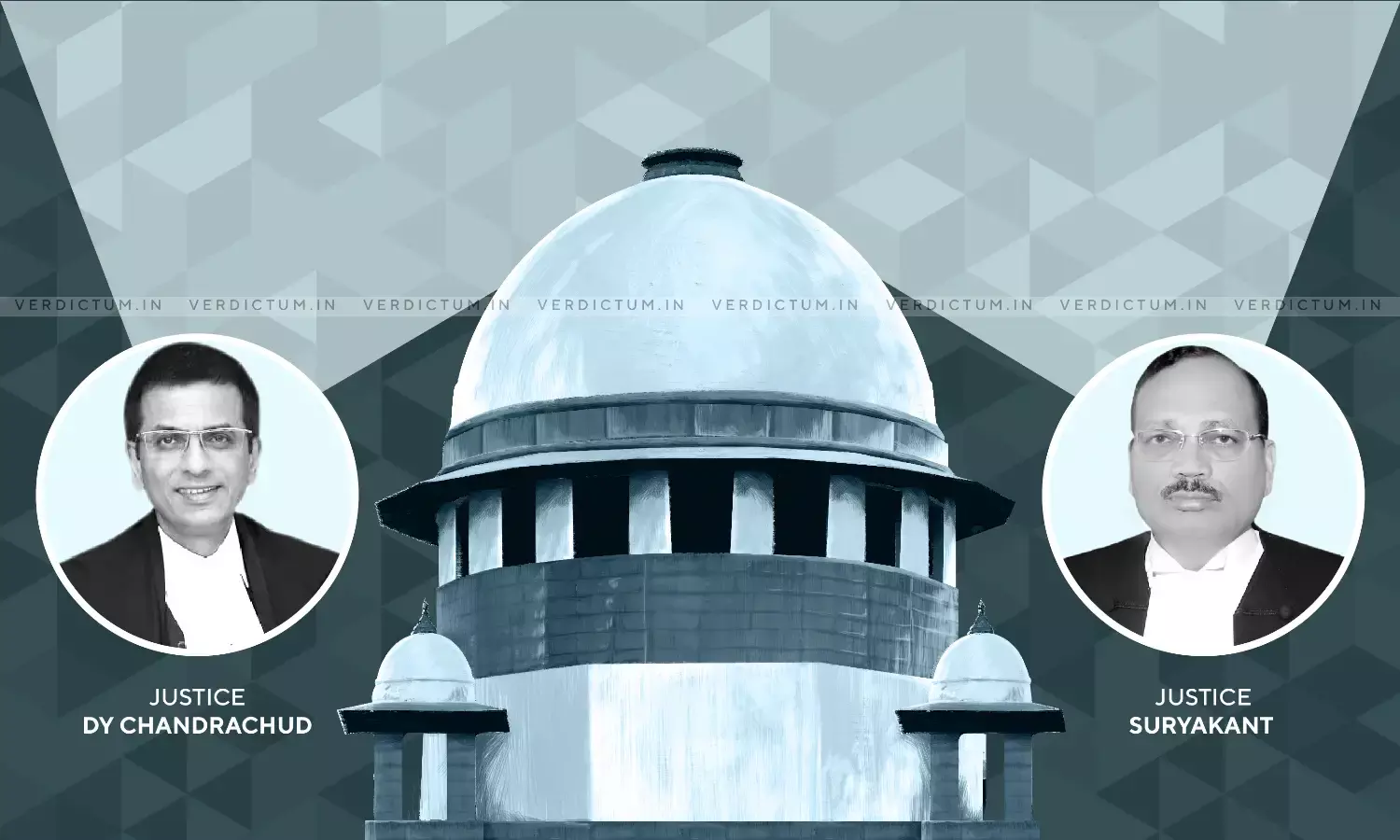Camouflaging Contract As Contract For Job Work To Avail Of Exemption From Payment Of Service Tax Not Permissible: SC

A two-judge bench of the Supreme Court comprising of Justice DY Chandrachud and Justice Surya Kant has observed that camouflaging the contract as a contract for job work to avail of the exemption from the payment of service tax was not permissible.
In this case, the Appellant obtained service tax registration under the category of 'Manpower Recruitment or Supply Agency Service'. Furthermore, the Appellant entered into an agreement with Semco Electric Pvt. Ltd. (later known as Sigma Electric Manufacturing Corporation Pvt. Ltd. ) and was required to provide personnel for activities such as felting, material handling, pouring, and supply of material to furnace.
A notice to show cause was issued by the Commissioner of the erstwhile Pune-I Central Excise Commissionerate that demanded service tax along with interest and with a proposed penalty of Rs. 10,50,23,672. The show-cause notice was adjudicated upon by the Commissioner of Central Excise Pune-I, Commissionerate which held that the Appellant habitually delayed paying service tax every month from 2012 to 2014. The order of the adjudicating authority was challenged in an appeal before the CESTAT, WZB, Mumbai where the Tribunal held that the agreement between the Appellant and Sigma was a contract labor agreement executed for the purpose of providing requisite manpower and was not a job work contract which could receive the benefits of the Notification No.25/2012. This impugned judgment was challenged before the Supreme Court.
Senior Counsel, Mr. Tarun Gulati, appeared on behalf of the Appellant while the Additional Solicitor General, Mr. N Venkataraman represented the Respondent in the case before the Apex Court.
The primary issue in this case was -
Whether the Appellant was a job worker within the meaning of the exemption notification or was merely a supplier of contract labor for the work of the establishment.
It was contended by the Appellant that under the terms of the Contract Labour (Regulation and Abolition) Act, 1970, the definition of the expression "contractor" covered both a person who undertook to produce a given result as well as a supplier of manpower service. Hence it was urged that though the Appellant had to be registered as a contractor under the CLRA, that was because the appellant fell within the definition of the expression "contractor" in Section 2(c), as a person who undertook to produce a given result for the establishment by engaging contract labor.
On the other hand, the Respondent argued that the provisions of the agreements executed by the Appellant indicated that the Appellant was required to cover the supply of manpower services to Sigma as distinct from the performance of job work. Moreover, it was submitted that the contracts were pure labor contracts in which there was a conspicuous absence of details or specifications pertaining to the work which was to be performed, the output to be generated, and delivery schedules, among other crucial elements of a genuine contract for job-work.
The Supreme Court observed that the fact that the Appellant was not a job worker was evident from a conspicuous absence in the agreement of crucial contractual terms which would have been found had it had been a true contract for the provision of job work in terms of Para 30(c) of the exemption notification.
According to the Court, there were a complete absence in the agreement of any reference to namely - (i) the nature of the process of work which had to be carried out by the appellant; (ii) provisions for maintaining (a) the quality of work; (b) the nature of the facilities utilized; or (c) the infrastructure deployed to generate the work; (iii) the delivery schedule; (iv) specifications in regard to the work to be performed; and (v) consequences which ensue in the event of a breach of the contractual obligation.
The Court asserted that - "in this case, though ostensibly, the agreement contains a provision for payment on the basis of the rates mentioned in Schedule II, the agreement has to be read as a composite whole. On reading the agreement as a whole, it is apparent that the contract is pure and simple a contract for the provision of contract labour. An attempt has been made to camouflage the contract as a contract for job work to avail of the exemption from the payment of service tax."
Thus, the Supreme Court held that there was no merit in the appeal and accordingly dismissed it.
Click here to read/download the Judgment

